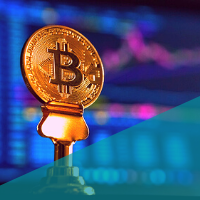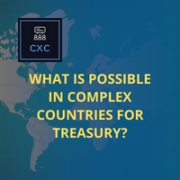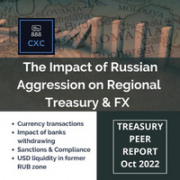Stablecoins are not that stable: what regulatory approach?
09-08-2021 | Carlo de Meijer | treasuryXL
Stablecoins are one of the newest hot spots on the crypto market. They have the potential to enhance the efficiency of the provision of financial services including payments, and to promote financial inclusion. They might offer a new way to transact and retain value, starting to redefine modern finance. We all have seen their incredible growth in 2020 and 2021 under the DeFi market influence as I described in my former blog. Stablecoins however bear a number of risks that could harm. They are not that stable as is suggested. And think of the systemic risks when stable coins are being used all over the world. Disruptions in the value of a stablecoin could not only have damaging impact on the broader crypto market, but also on the real financial world, unless regulators step in. Main question is: what kind of regulatory oversight would work best without harming innovation?
What are stable coins?
Stablecoins are a type of cryptocurrencies that are pegged to and/or backed by the underlying real-world assets what can be anything from fiat money, commodities or even another cryptocurrency. Like their name suggests, stablecoins are designed to have value that stays (rather) stable with traditional currencies or the underlying commodities. Many stablecoins are collateralized at a 1:1 ratio with their peg, which can be traded on exchanges across the world.
Stablecoins have been created to overcome the price volatility of crypto currencies such as Bitcoin or Tether, which stems from the fact that there is no robust mechanism to determine their real-world value. Given high levels of distrust in those cryptocurrencies, investors tend to resort to safer options like stablecoins. These may leverage the benefits of cryptocurrencies and blockchain without losing the guarantees of trust and stability that come with using fiat currencies. Currently, there are more than 200 stablecoins. At the time of writing of this blog the total value of stablecoins issued on public blockchain networks has surpassed $110 billion, compared to $28 bn at the start of 2021, which reflects the high institutional and retail demand in unstable times.
Types of stable coins
Based on design, we can split stablecoins into a number of major types: fiat-collateralized, crypto-collateralized, commodity-collateralized, and algorithmic or non-collateralized.
Fiat-collateralized
Fiat-collateralized stablecoins are the simplest and most common type. They are pegged to fiat currencies like the US dollar or the Euro, and usually backed at a 1:1 ratio, by holding a basket of dollar- or euro-denominated assets. This means that for each of such stablecoin in existence, there is a fiat currency in a bank account. Traders can exchange their stable coins and redeem their dollars directly from the exchange at any time. The most popular fiat-collateralised stablecoins are Tether (USDT) (market cap $62 bn) and USD Coin (USDC0 (market cap $ 27,3 bn).
Commodity-collateralized
These are stablecoins that are backed by commodity assets, like precious metals, gold, silver, real estate, or oil. This theoretically indicates to investors that these stablecoins have the potential to appreciate in value in parallel with the increase in value of their underlying assets, thereby providing an increased incentive to hold and use these coins. One example of these stablecoins is PAX Gold (PAXG) (market cap $330 mio), that relies on a gold reserve.
Crypto-collateralized
Another type are crypto collateralized stablecoins. These are pegged to other cryptocurrencies as collateral. Because the crypto values themselves are not stable, these stablecoins need to use a set of protocols to ensure that the price of the stablecoin issued remains at $1. They are often collateralized by a diversified reserve of cryptocurrencies that can sustain shocks and yet remain stable. Another mechanism involves over-collateralization, which means for a crypto-backed stablecoin that is pegged 1:2, for each stablecoin, cryptocurrency worth twice the value of stablecoins will be held in reserve. Since everything occurs on the blockchain, these crypto-backed stablecoins are much more transparent, have open source codes, and can be operated in a decentralized manner, unlike their fiat-backed counterparts. However, they are also more complex to understand, and therefore lack popularity. The most popular crypto-backed stablecoin is Dai (market cap $56.8 mio), created by MakerDAO, whose face value is pegged to the US dollar, but is collateralized by Ethereum.
Algorithmic or non-collateralized Stablecoins
A fourth class are so-called algorithmic stablecoins, also known as non-collateralized stablecoins. This is a very different design as it is not backed by any collateral. It operates in the way fiat currencies work, in that it is governed by a sovereign such as a country’s Central Bank. Given the evident difficulties these stablecoins have at maintaining value stability their usefulness is limited.
Algorithmic stablecoins use total supply manipulations to maintain a peg. The basic mechanism is creating a new coin, setting a peg, and then monitoring the price on the exchange. This can be done algorithmically, in a decentralized way, with open source code that is visible and auditable by everyone. This so-called rebasing is a speculative investment asset where the probability of gain and the probability of loss are both greater than zero. A second category of algorithmic stablecoins are coupon-based coins. The difference from rebasing coins is that holders don’t see their number of tokens change unless they do specific actions. The downside, however, is that coupon-based coins seem to be much more unstable. Some of the more known ones include Ampleforth (AMPL), Based, Empty Set Dollar (ESD) and Dynamic Set Dollar (DSD).
How do stablecoins work?
Some central stablecoins, such as Tether, require a custodian to regulate the currency and then reserve a certain amount of collateral. Tether holds the US dollar in a bank account. The amount held must be equal to what they issue to maintain the order of the system. In this way, price fluctuations should be prevented. However, there are other stable decentralized cryptocurrencies, such as the crypto-backed stablecoin Dai that achieve this goal without a central authority figure. They use smart contracts on the Ethereum blockchain to manage the collateral and maintain order. Stablecoins automatically adjust the number of tokens in circulation to keep the price stable. This means that the value of stable coins should (in theory) not fluctuate frequently, as in normal crypto assets.
Why are stablecoins used?
Stablecoins are used in the crypto market for a number of reasons. Crypto currency owners may turn profits into stablecoins in the short term with the intention of investing in other cryptocurrencies when opportunities arise, rather than turning profits into fiat money and transferring them to their bank account.
Stablecoins are also invested in cryptocurrency exchanges or decentralised finance (DEFI) applications to return interest and yield. Investing in crypto currency exchanges in particular offers a safe and attractive alternative to traditional savings methods offered by legacy finance. They empower more people to harness the benefits of the blockchain without the risk of large market fluctuations. In the event of a local fiat currency crashing, people can easily exchange their savings with US dollar backed or Euro-backed or even gold-backed stablecoins, thereby preventing the further depreciation of their savings.
Where are stablecoins used?
With the growing number of stablecoins the use cases keep growing.
Switch between volatile cryptocurrencies and stablecoins
Stablecoins are most popularly used to quickly switch between a volatile cryptocurrency and a stablecoin, while trading, to protect the value of holdings. They provide traders with a ‘safe harbor’, which allows them to reduce their risk to crypto-assets without the need to leave the crypto ecosystem.
Allow the use of smart contracts
Stablecoins allow for the use of smart financial contracts that are enforceable over time. These are self-executing contracts that exist on a blockchain network, and do not require any third party or central authority’s involvement. These automatic transactions are traceable, transparent, and irreversible, making them an ideal tool for salary/loan payments, rent payments, and subscriptions.
Mainstream commerce
Because these stablecoins are seen as relatively less volatile compared to other cryptocurrencies like Bitcoin and Ether, the idea is that stablecoins might be more widely accepted in mainstream commerce. Consumers, businesses and merchants would therefore be more comfortable with using stablecoins as true units of exchange.
Payments
Stablecoins allow payers to get as close to the benefits of cash as possible. Stablecoins are freely transferable just like cash; anyone on the blockchain network can receive and send coins. The coins are structured as bearer instruments, giving the holder the rights to redeem the coins for US dollars at any time. This is especially relevant in the decentralized finance (DeFi) segment, where stablecoins play an important role to enable the ecosystem. Mainstream applications with stablecoins are also picking up in cross-border payments, where they are being used to facilitate cross-border trade and remittances.
Risks of stable coins
While stablecoins have the potential to enhance the efficiency of the provision of financial services, they may also generate risks to financial stability, particularly if they are adopted at a significant scale. Some stablecoins are actually riskier than they may seem. Stablecoins may bear risks in terms of asset contagion, collateral and accountability. We also shouldn’t ignore the risks that stablecoins potentially pose to the financial system in terms of systemic risks thereby undermining sovereign currencies.
Not all stablecoins are stable
Notwithstanding their name and the suggestion that their value is quite stable, not all stablecoins are really 100 percent price-stable. Their values are dependent on their underlying assets. Stable coins can only be truly stable if they are 100% backed by cash. The reason for that is that the issuers of fiat-collateralized stablecoins need to manage the supply of their coins through issuing and redeeming to ensure the value of their coins maintains roughly 1-to-1 with the fiat currency. This stands true for commodity-backed and crypto-backed stablecoins as well. The promise can only work if the stablecoin issuer properly manages the reserves. Since cryptocurrency prices can fluctuate violently, crypto-backed stablecoins are more susceptible to price instability than other collateralized stablecoins.
Asset contagion risk
The rapid growth of stablecoin issuance could, in time, have implications for the functioning of short-term credit markets. Certain stablecoins are today’s economic equivalent of money-market funds, and in some cases their practices could lead to lower values, creating significant damage in the broader crypto market. There are potential asset contagion risks linked to the liquidation of stablecoin reserve holdings. These risks are primarily associated with collateralised stablecoins, varying based on the size, liquidity and riskiness of their asset holdings, as well as the transparency and governance of the operator.
Fewer risks are posed by coins that are fully backed by safe, highly liquid assets.
One of the most known and most widely traded stablecoin is Tether. Each Tether token is pegged 1-to-1 to the dollar. But the true value of those tokens depends on the market value of its reserves. Tether has disclosed that as of 31 March it held only 26.2% of its reserves in cash, fiduciary deposits, reverse repo notes and government securities, with a further 49.6% in commercial paper (CP).
Collateral consequences
Also further collateral consequences, particularly because the recent rise in crypto prices, has been fuelled in significant part by debt. It is questionable whether stablecoins could liquidate sufficient investments quickly to satisfy the demand if needed. The consequences of such an inability to meet a sudden wave of withdrawals could be significant in the larger crypto ecosystem.
Lack of accountability
The drawback of fiat-collateralized stablecoins is that they are not transparent or auditable by everyone. They are operated just like non-bank financial intermediaries that provide services similar to traditional commercial banks, but outside normal banking regulation. They therefor may escape accountability. In the case of fiat-backed stablecoins traders need to blindly trust the exchange or operator to trade in these currencies or try to find and examine out its financial disclosers by themselves to ensure that the stablecoins are fully backed by fiat, even if they do not release audit results.
Financial stability and systemic risk
Stablecoins may also generate risks to financial stability. Some of these fiat currency-pegged tokens are not backed by actual fiat currencies, but by a combination of riskier assets. This puts not only stablecoin holders at risk but could potentially threaten financial stability in general, if a run on a stablecoin causes the asset and other cryptocurrency prices to collapse. And there is the systemic risk issue. A widely adopted stablecoin with a potential reach and use across multiple jurisdictions (so-called “global stablecoin” or GSC) like Facebook’s Libra, now called Diem, could become systemically important in and across one or many jurisdictions, including as a means of making payments.
Why is regulation needed?
These issues underline there is a large regulation gap concerning stablecoins that contributes to weak investor protection and fraudulent activities. There is no legal framework for regulating stable coins, so no requirements on how reserves must be invested, nor any requirements for audits or reporting. This lack of regulatory clarity also creates confusion when new products related to stablecoins are brought to market.
The activities associated with “global stablecoins” and the risks they may pose can span across banking, payments and securities/investment regulatory regimes both within jurisdictions and across borders. Especially if stable coins would become a significant part of the payments and finance universe there is urging need for a regulatory framework. Ensuring the appropriate regulatory approach within jurisdictions across sectors and borders will be important.
Regulatory scrutiny of stablecoins
A range of regulatory bodies, from the G7, the Federal Stability Board (FSB) to the BIS, have started publishing guidelines. They mostly highlighted risks and challenges, including issues such as financial stability, consumer and investor protection, anti-money laundering, combating financing of terrorism, data protection, market integrity and monetary sovereignty, as well as issues of competition, monetary policy, cybersecurity, operational resilience and regulatory uncertainties.
G7 Summit
At the recently held 2021 G7 Summit in Cornwall (UK) delegations concluded that common standards would be maintained through international cooperation, as well as, standards from the Financial Standards Board. They concluded that no global stablecoin project should begin operation until it adequately addresses relevant legal, regulatory, and oversight requirements through appropriate design and by adhering to applicable standards.
Basel Committee on Banking Supervision
Also released recently was a consultation paper from the Basel Committee on Banking Supervision on prudential treatment of stablecoin exposures. While the paper notes that bank exposure is currently limited the continued growth and innovation in crypto assets and related services, coupled with the heightened interest of some banks, could increase global financial stability concerns and risks to the banking system in the absence of a specified prudential treatment.
BIS
The BIS’ Basel Committee ‘posited’ in a recent announcement that the crypto classes would be divided between offerings such as stablecoins and tokenized assets that would be eligible for treatment under the Basel Framework, which provides standards for banking supervision. The proposed roadmap hints at more regulation such as stablecoins being governed by stricter capital reserve policies.
FSB recommendations
The Financial Stability Board (FSB) has agreed on 10 high-level recommendations to address the regulatory, supervisory and oversight challenges raised by “global stablecoin” arrangements. They thereby respond o a call by the G20 to examine regulatory issues raised by “global stablecoin” arrangements and to advise on multilateral responses as appropriate, taking into account the perspective of emerging market and developing economies.
According to the FSB, the emergence of global stable coins (GSCs) may challenge the comprehensiveness and effectiveness of existing regulatory and supervisory oversight. They therefor proposed some principles for regulating stablecoins, including restrictions on reserves, limits on risk and transparency requirements. That should promote coordinated and effective regulation, supervision and oversight of GSC arrangements These arrangements should address the financial stability risks posed by GSCs, both at the domestic and international level. The recommendations call for regulation, supervision and oversight that is proportionate to the risks. They thereby support responsible innovation and provide sufficient flexibility for jurisdictions.
The final recommendations., including the feedback from the public consultation, will be published in October 2021, while the completion of international standard-setting work is planned by December this year.
Regulatory approaches
Notwithstanding the active work of the various international regulatory and oversight bodies it is still far from sure what regulatory approach would be chosen. There still remains uncertainty as to how they will regulate, either by proposing a bespoke regime for stable coins, banning it outright or assimilating the asset class into their existing regulatory frameworks. There is a number of regulatory approaches starting to shape how stablecoins might be governed and to more narrowly define their use. Most advanced are the EU where the EU Commission came up with their MICA proposal, though the timetable and details of planned changes remain unclear or subject to change. But now also in countries like the US and the UK regulatory activities are accelerating.
EU Market in Crypto-Asset Regulation (MICA)
Europe is currently assessing the large number of comments received during the consultation period on its proposed Market in Crypto-Assets regulation (MICA) that was issued last year September. MICA especially focuses on rules that regulate stablecoins, particularly those that have the potential to become widely accepted and systemic and crypto asset providers such as exchanges. Aim is to provide a comprehensive and transparent regulatory framework and establish a uniform set of rules that should provide investor protection, transparency and governance standard, while allowing the digital asset ecosystem to flourish.
The regulation thereby separates stablecoins into categories such as e-money tokens (stablecoins whose value is pegged to a single fiat currency) and significant asset referenced tokens’, which purport to maintain a stable value by referring to the worth of fiat currencies. These significant asset-referenced tokens are subject to strict regulatory standards of transparency, operation, and governance. Unlike other cryptocurrencies, stablecoins need to be authorised by regulatory institutions to be traded within the EU. The authorisation requirement applies also to stablecoins already in circulation. Except for existing credit institutions, everyone else that wishes to engage in stablecoin activities will also have to gain prior permission from their national supervisory authority.
MICA regulation makes it a legal obligation for stable coin projects to issue a white paper and submit it to their national financial supervisory authority. That supervisory body has the power to prohibit the issuer from releasing their planned stable coins. Most importantly, the regulation prohibits the issuance of interest to e-money tokens. With the interest ban, the EU legislator is arguably aiming to disincentivise the investment of crypto profits in stablecoins, and consequently to protect the interests of the European banking sector.
UK Bank of England
Though the UK is well behind with its regulatory activities around stablecoins compared to the EU, regulators in the UK are now also speeding up their steps to regulate stablecoins. Earlier this year the UK HM Treasury issued a general consultation and a call for evidence on crypto assets and stablecoins generally. The UK’s proposals however are narrower than the UK MICA proposals, reflecting an intention to take a ‘staged and proportionate approach’. In particular, the UK proposes to regulate only ‘stable tokens used as a means of payment’ initially.
The Bank of England Discussion Paper that was recently launched kicked of a conversation regarding digital money, stating that stablecoins, typically backed by fiat or another asset, but issued by a private firm, need to be regulated in the same way as payments currently handled by banks if they become widespread and can impact financial stabilities.
US Biden government
With the new Biden government also in the US activities surrounding regulating stablecoins are speeding up, and there is a growing optimism that 2021 will ‘bear witness to material progression’ from US regulators and law makers to better understand this technology and clarify the regulatory framework.
Stable Act
In December last 2020, just before the end of the US Congress tenure, a draft of the Stablecoin and Bank Licensing Enforcement Act (Stable Act) was introduced. The law would approve the use of stablecoins and cryptocurrencies as legitimate alternatives to other real-time payment systems. This Act however proposed significant increases in the regulatory oversight of stablecoins. It would limit who can issue the stablecoins, requiring that stablecoins be issued by a bank and would impose certain standards. It is however questionable if this Act in this form will really be approved by the US Congress.
US Fed
The US Fed is now also taking note of the rising usage of stablecoins. They announced it will issue a report later this year to begin a ‘major public consultation’ on crypto regulation, especially stablecoins, laying out the risks and benefits associated with stablecoins as well as a potential digital dollar.
Federal Reserve Chairman Jerome Powell said that the US is at a ‘critical point’ for regulation of these digital currencies, advocating for the application of new rules on stablecoins that are similar to those applied to bank deposits and money-market mutual funds, where the US has a pretty strong regulatory framework. The issuance of a stablecoin should be conditioned on following risk-limiting practices designed to ensure that the tokens are in fact worth that price. There should be liquidity requirements as well.
The President’s Working Group for Financial Markets
The President’s Working Group for Financial Markets, the nation’s top financial regulators in the US, last week met to discuss stablecoins and how to react. This is marking the first publicly-announced meeting of this group of regulators since Joe Biden took office earlier this year. Topics of discussion included the rapid growth of stablecoins, potential uses of stablecoins as a means of payment and potential risks to end users, the financial system and national security. This conversation is clearly only just starting. The meeting promised that the group, would publish recommendations for stablecoin regulation within the next few months. From this discussion it is not yet clear what sort of regulatory framework we might see, and which one would make the most sense for stablecoins.
The regulatory way forward
Stablecoins present peculiar challenges to regulators that ask for narrow cooperation between regulators and the stablecoin industry and global regulatory cooperation.
Stablecoins do not stand for a uniform category but represent a variety of crypto instruments that can vary significantly in legal, technical, functional and economic terms. In order to be effective in limiting risks and not disturbing innovations the stablecoin industry must work together with the regulators to come up with a framework that helps put them at ease while protecting this nascent industry from overregulation.
Another major regulatory challenge relating to global stablecoins is international coordination of regulatory efforts across diverse economies, jurisdictions, legal systems, and different levels of economic development and needs. There is not (yet) a uniform regulatory approach of regulators worldwide relating to stablecoins. Calls for the harmonization of legal and regulatory frameworks include areas such as governing data use and sharing, competition policy, consumer protection, digital identity and other important policy issues.
This all should contribute to more stability of stablecoins.
Carlo de Meijer
Economist and researcher













